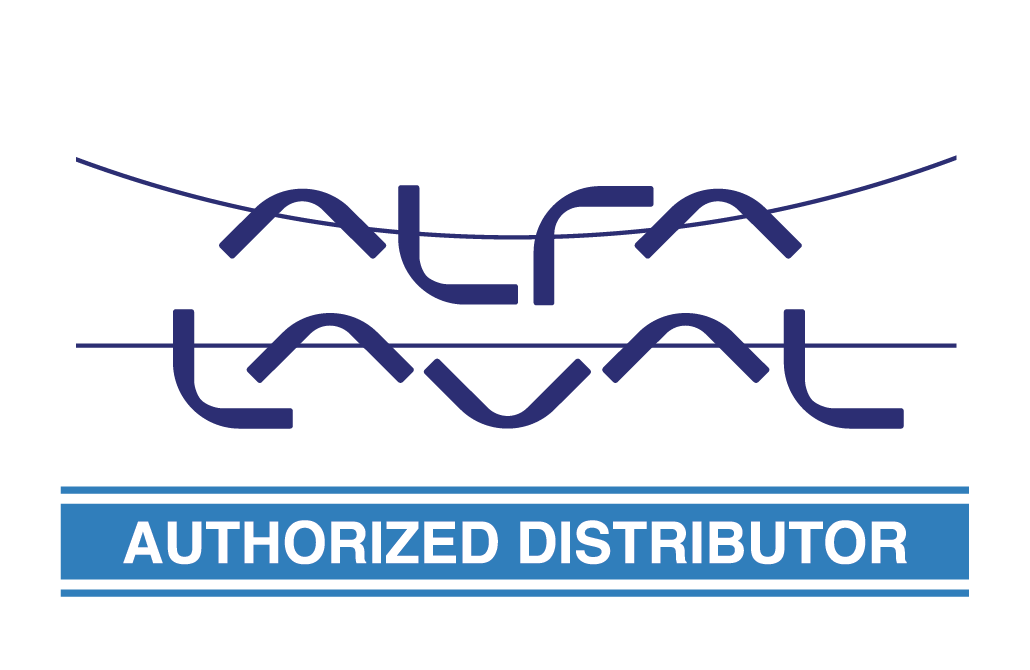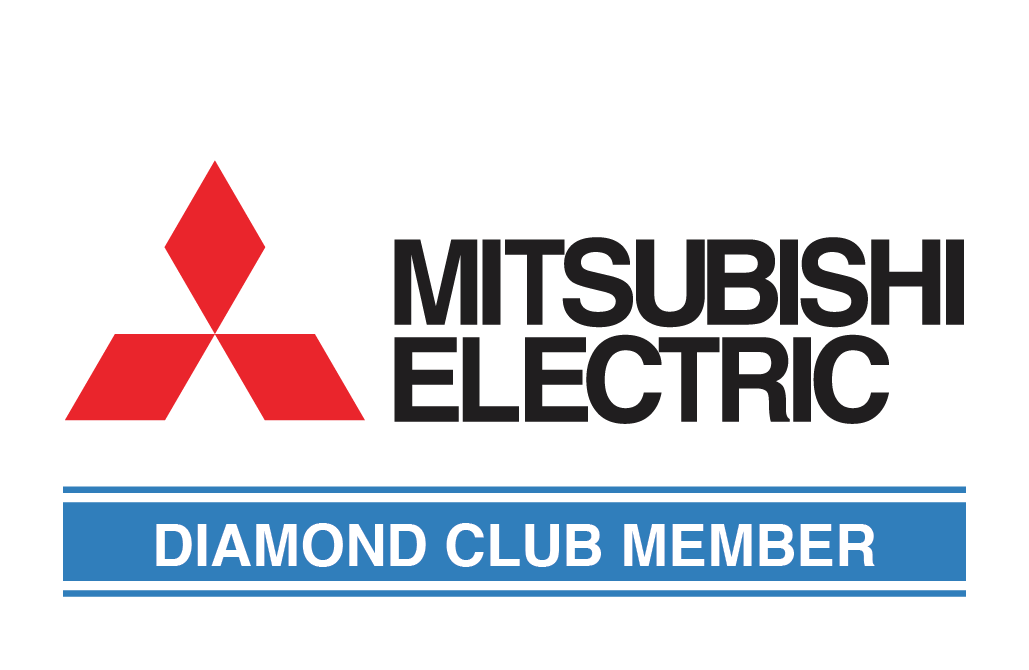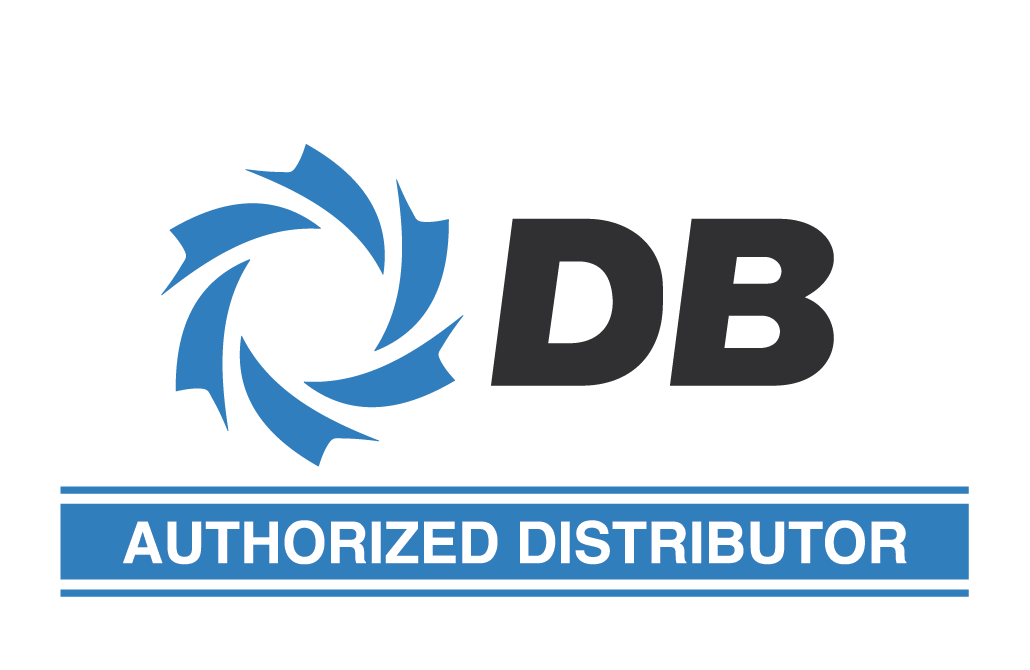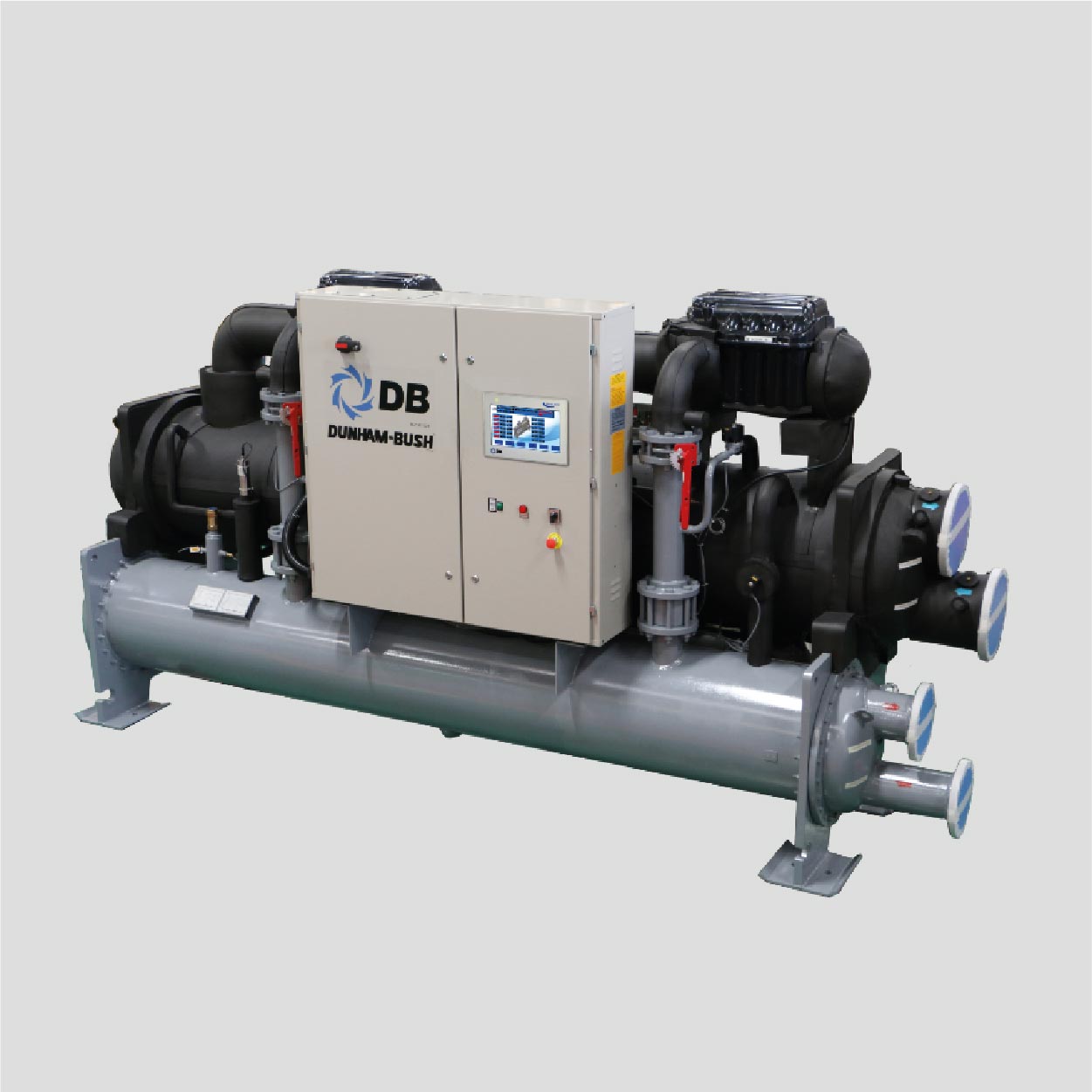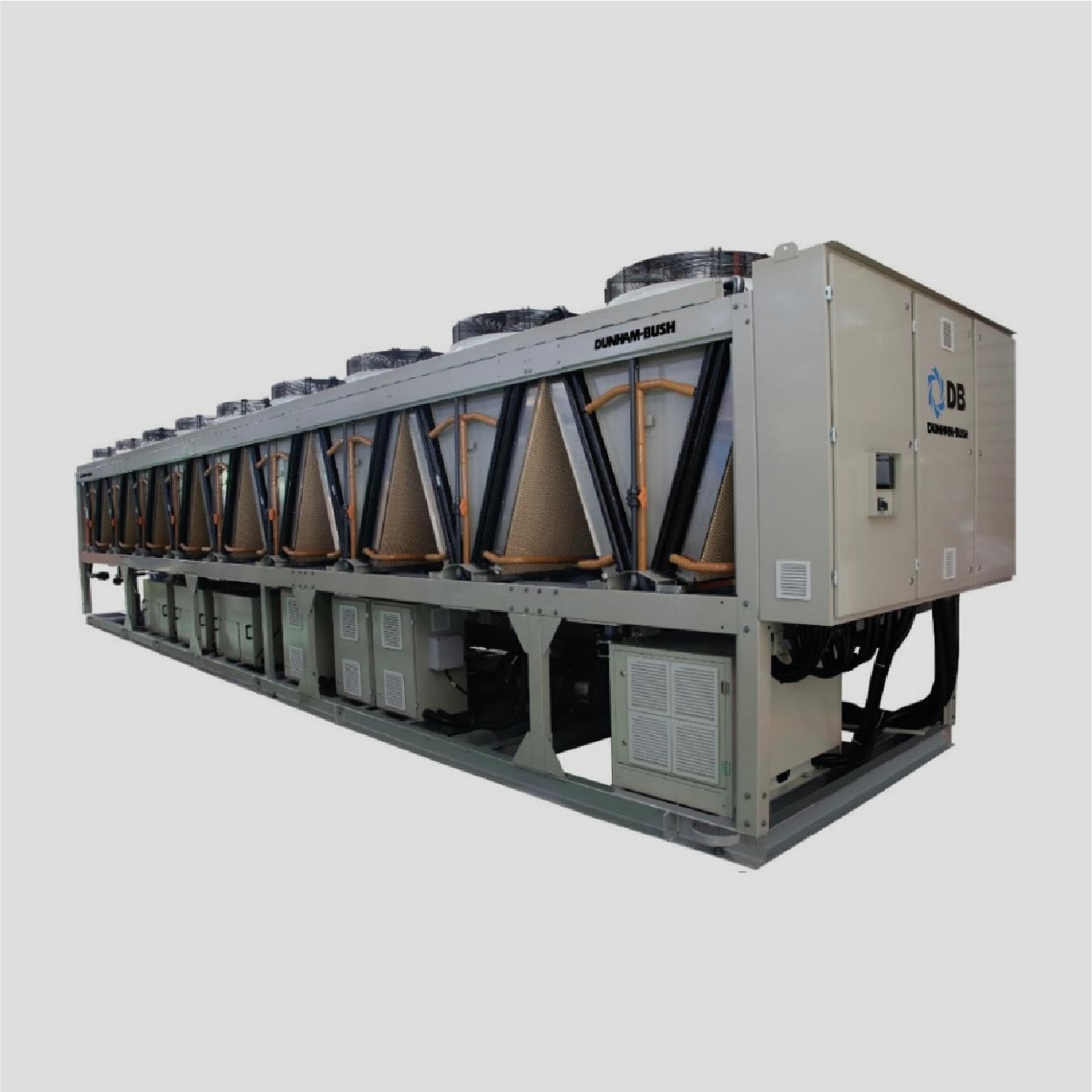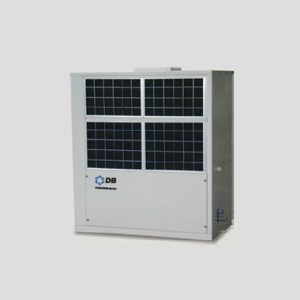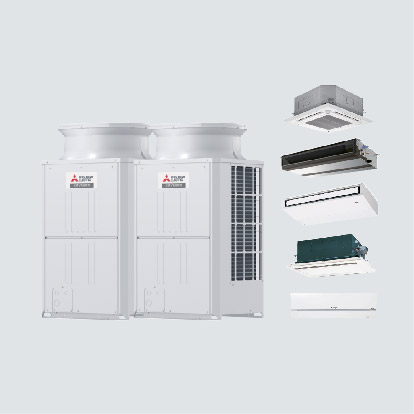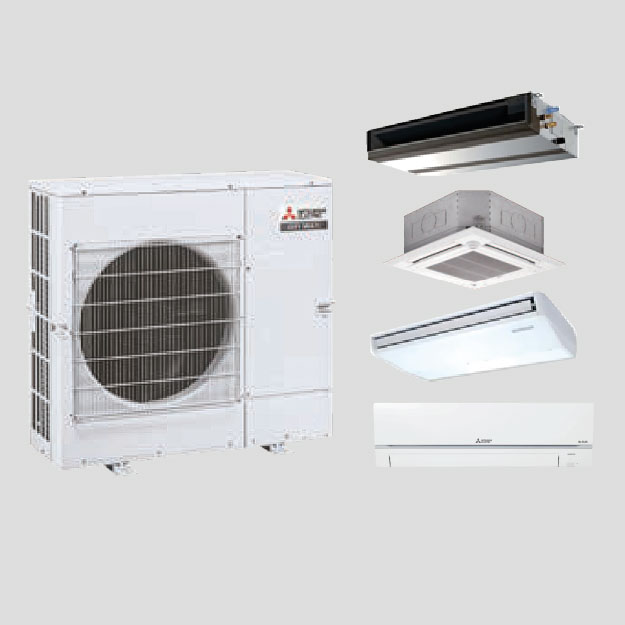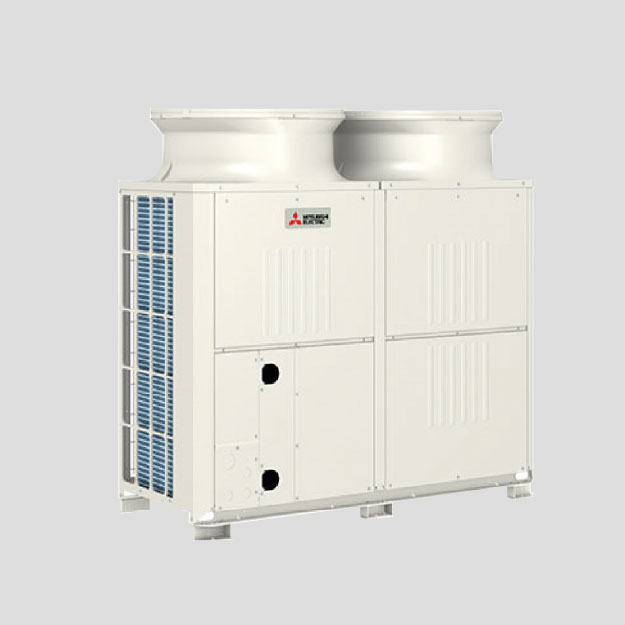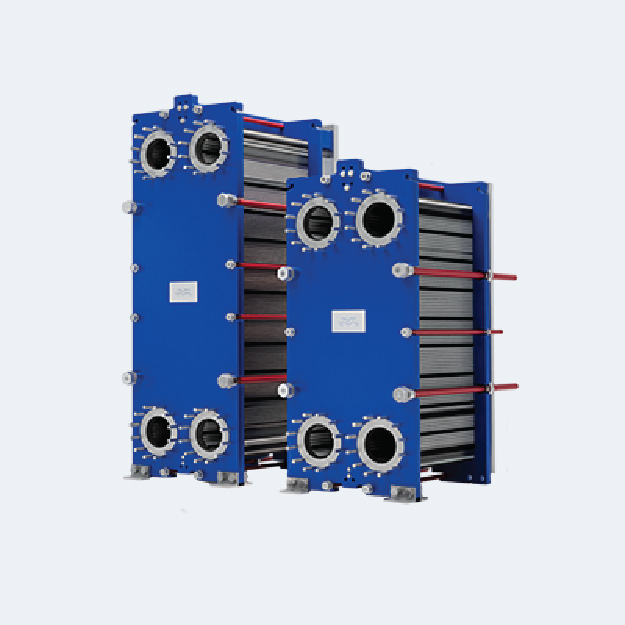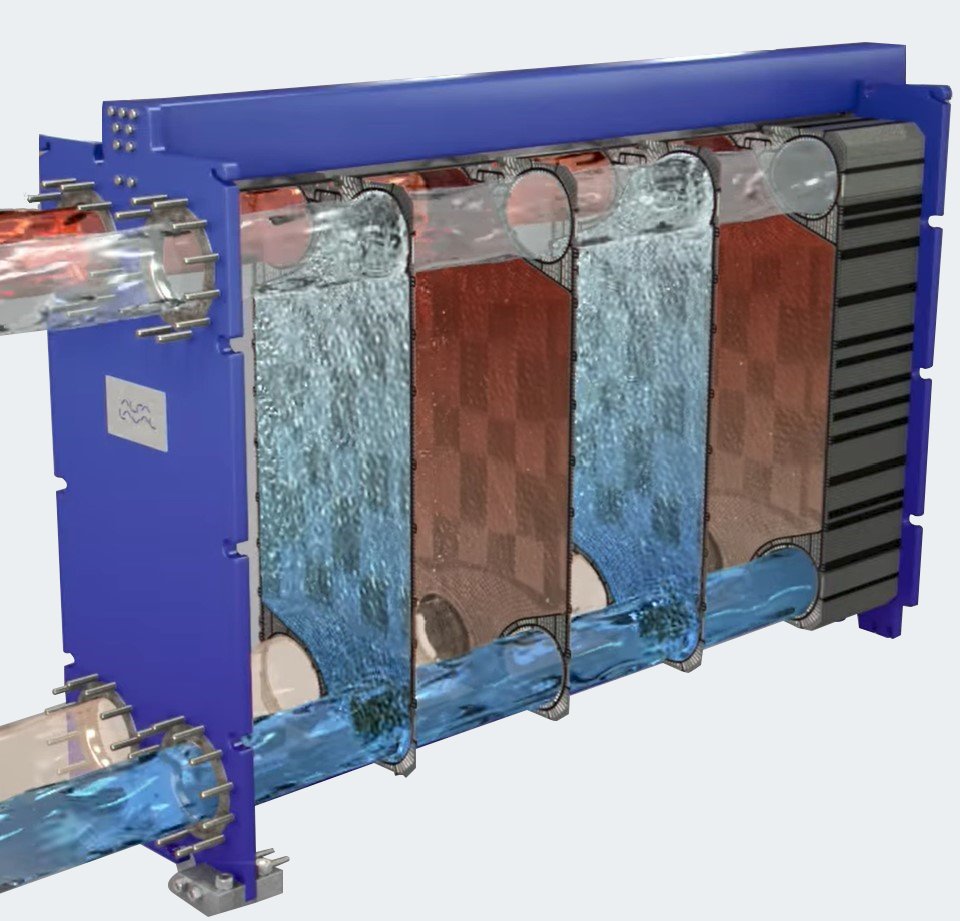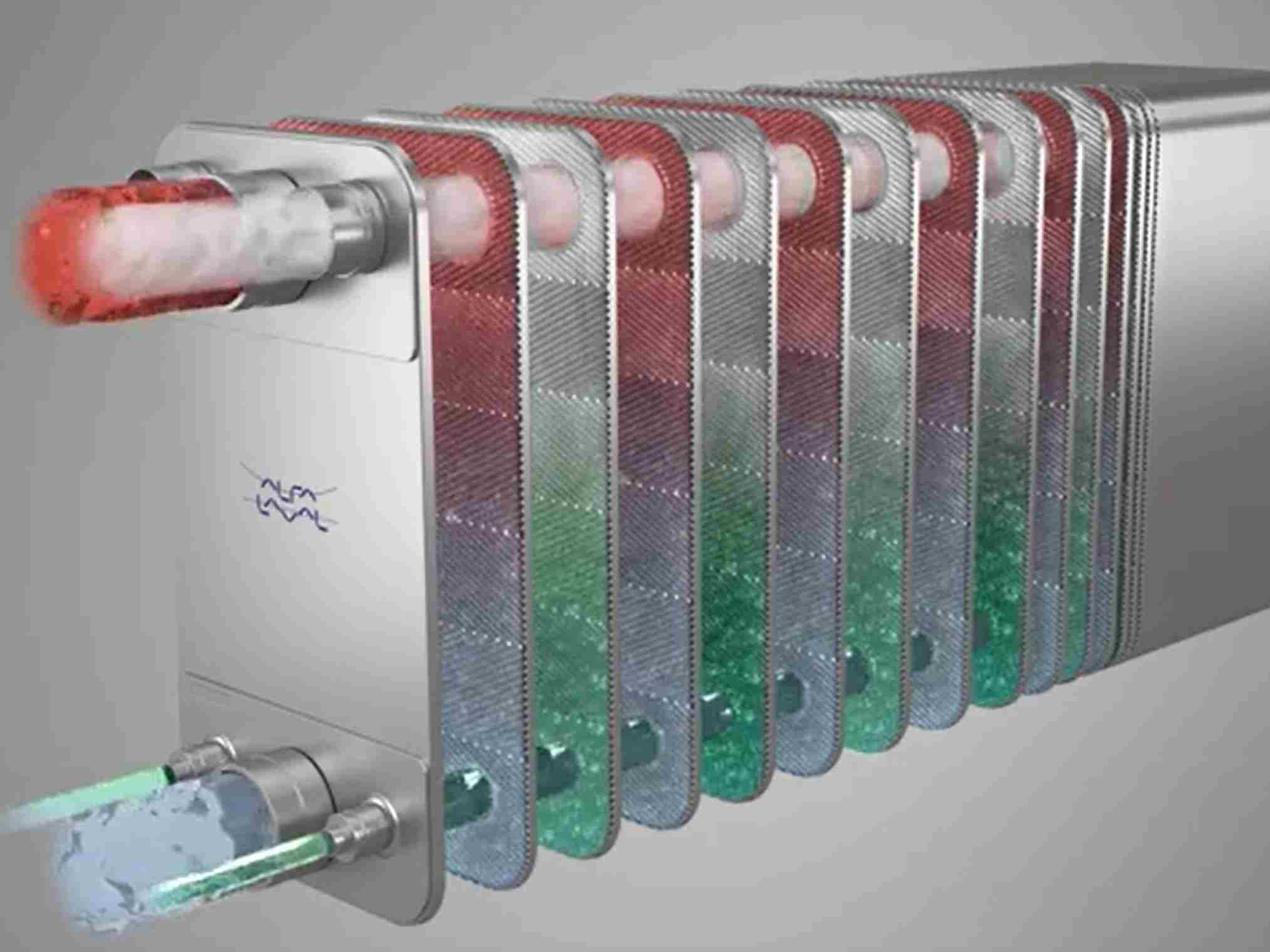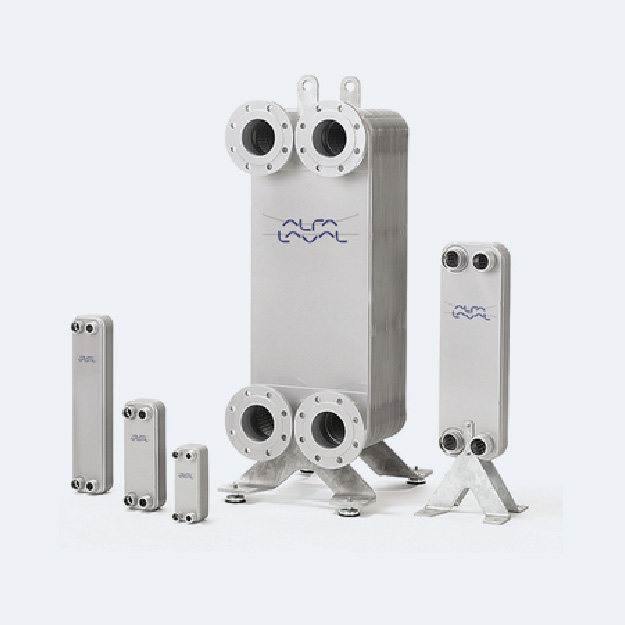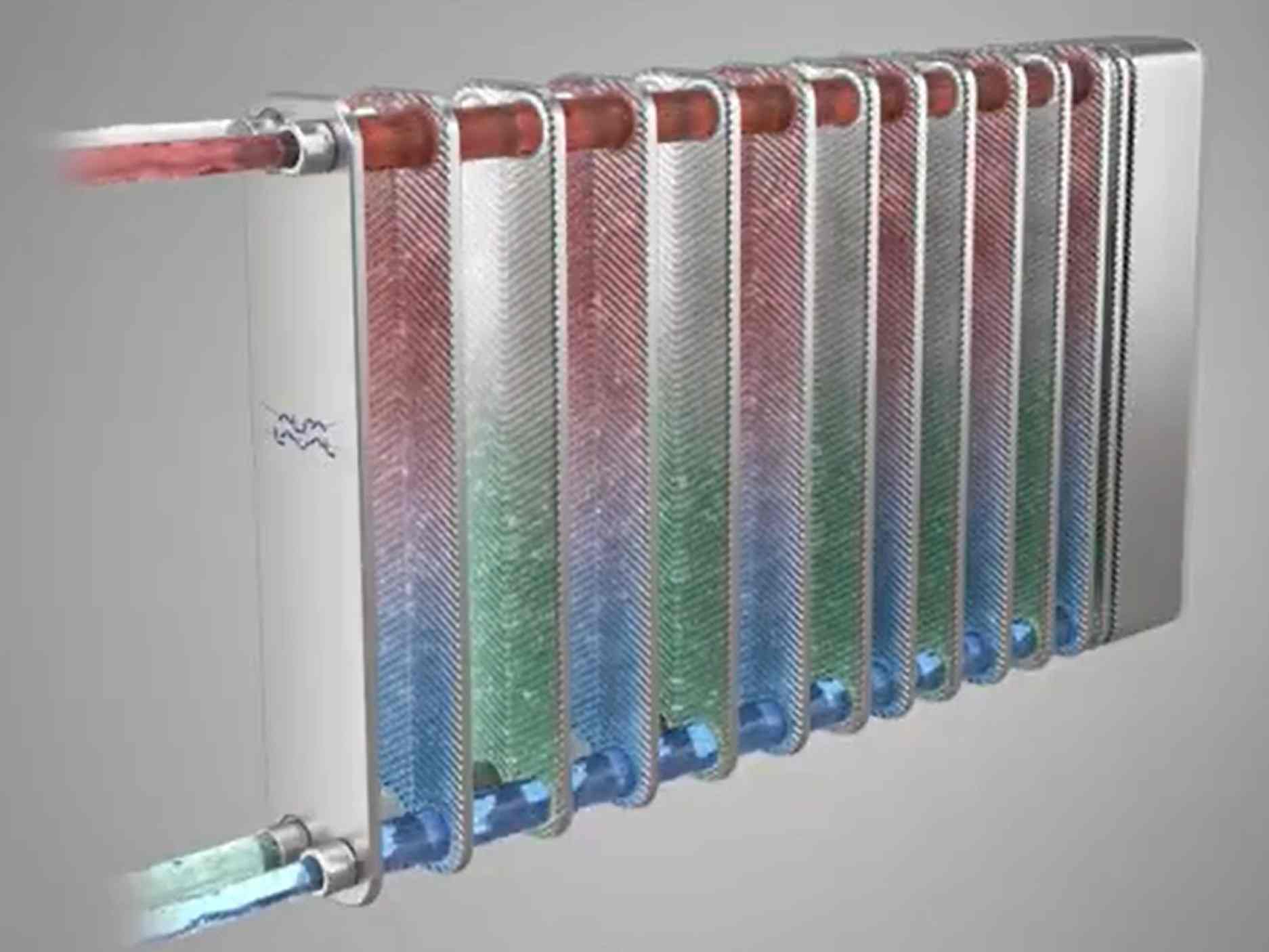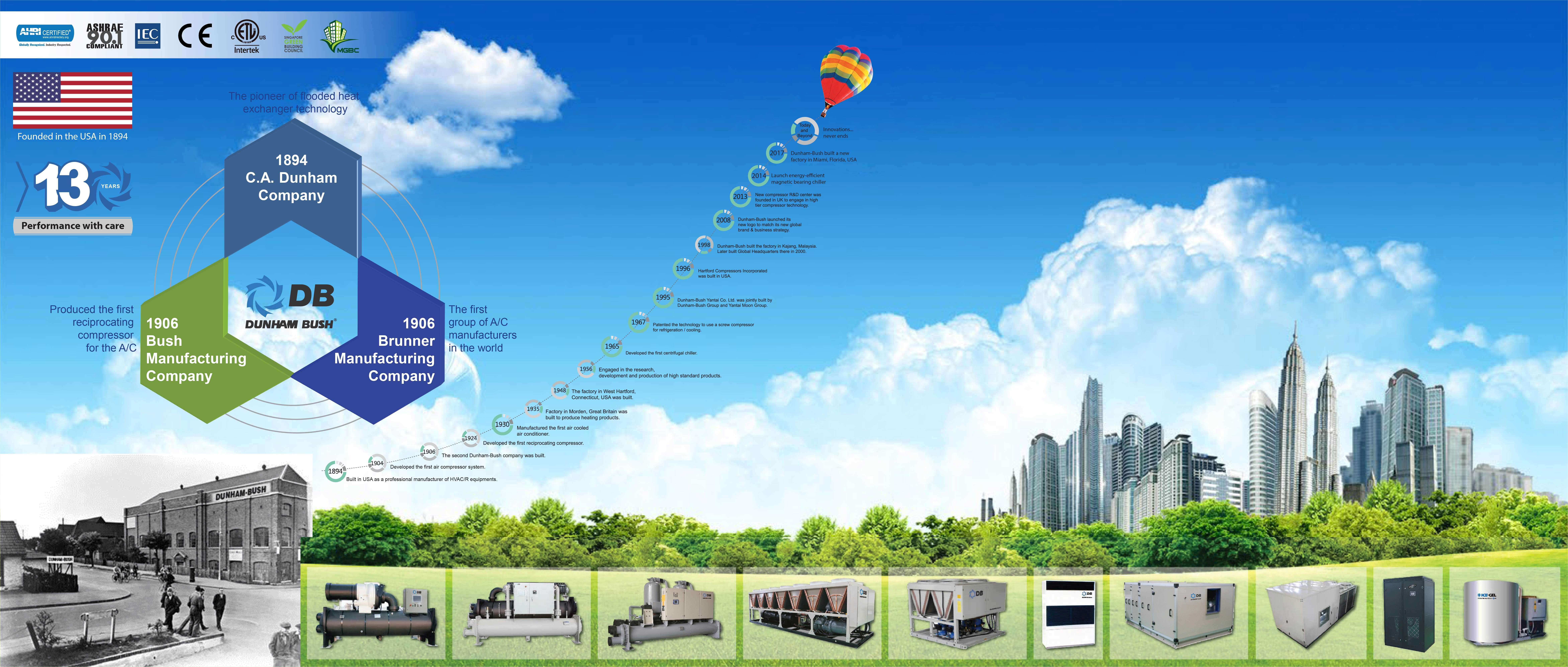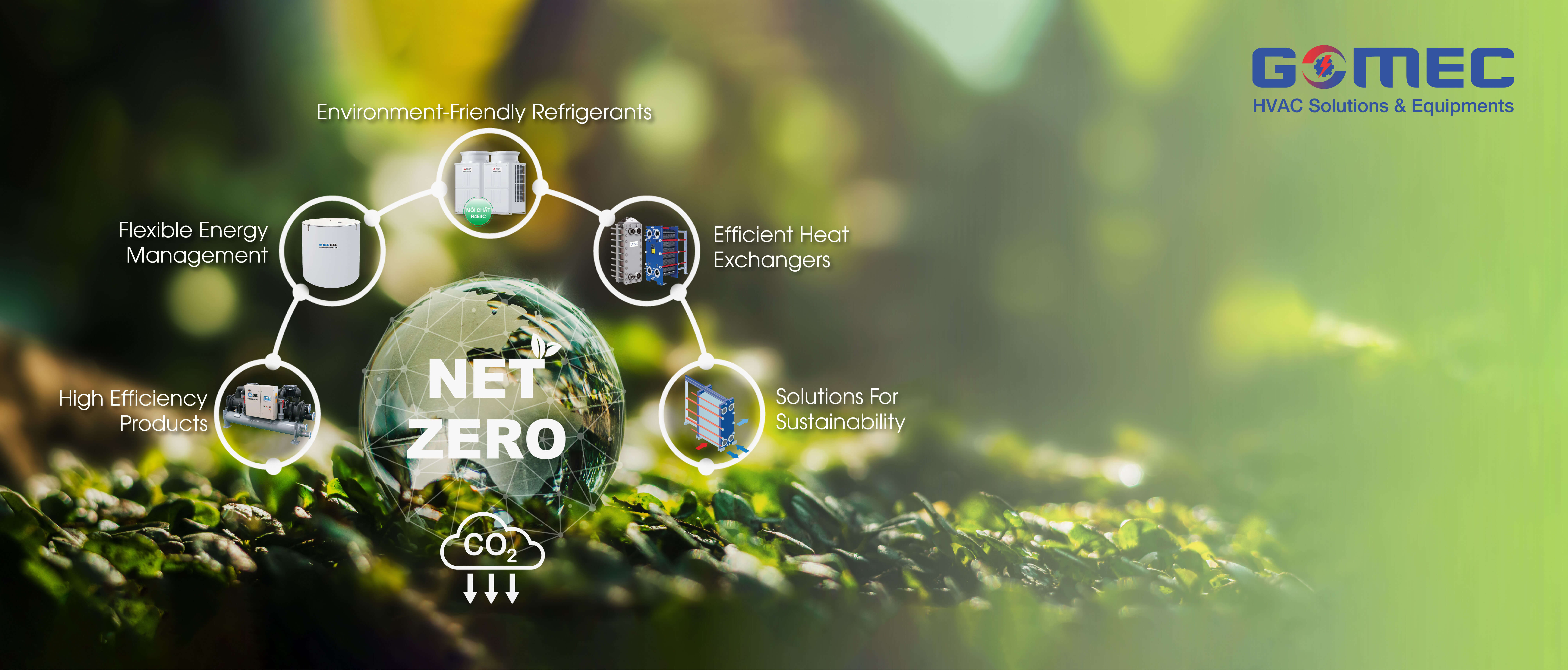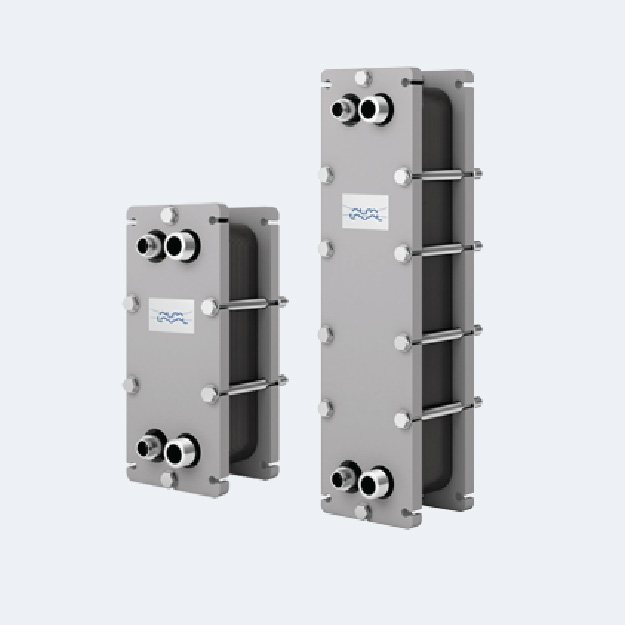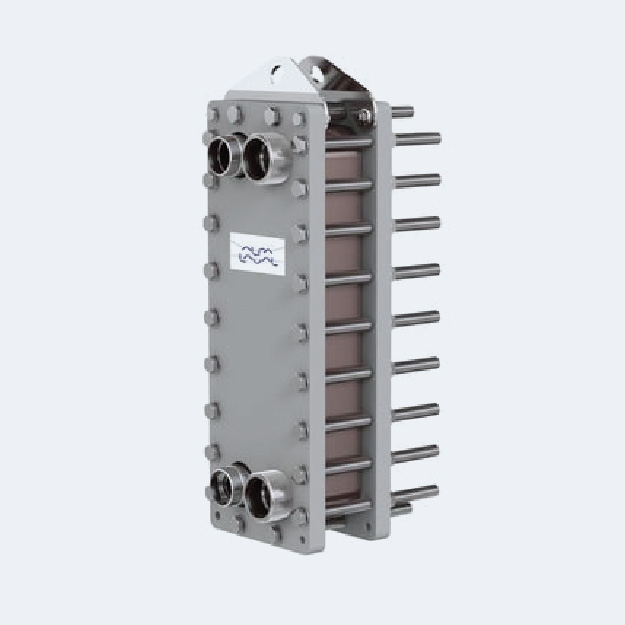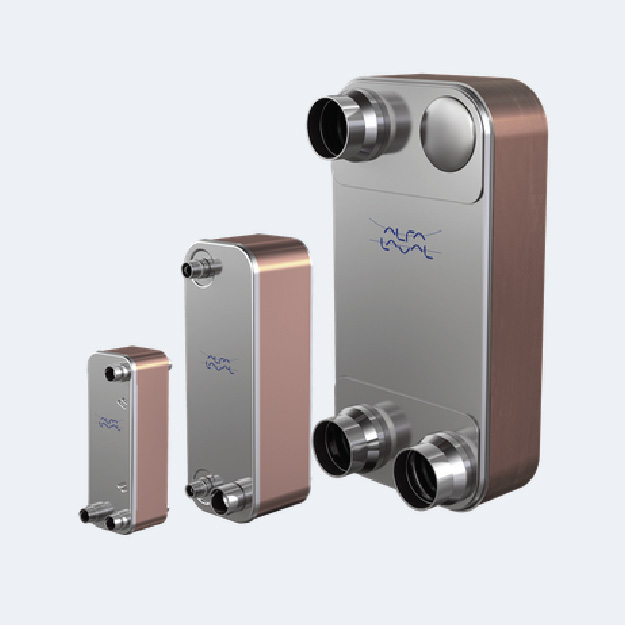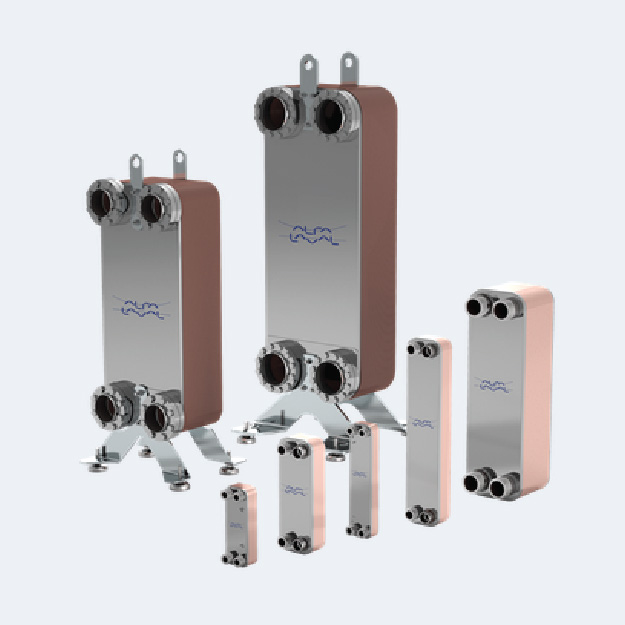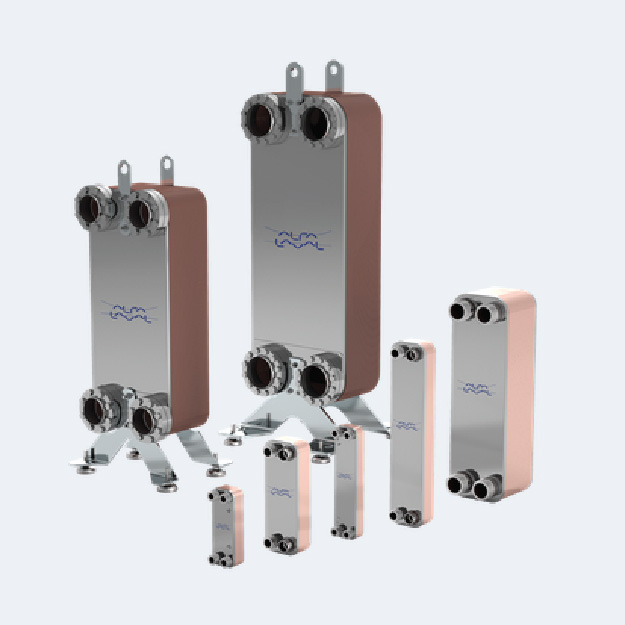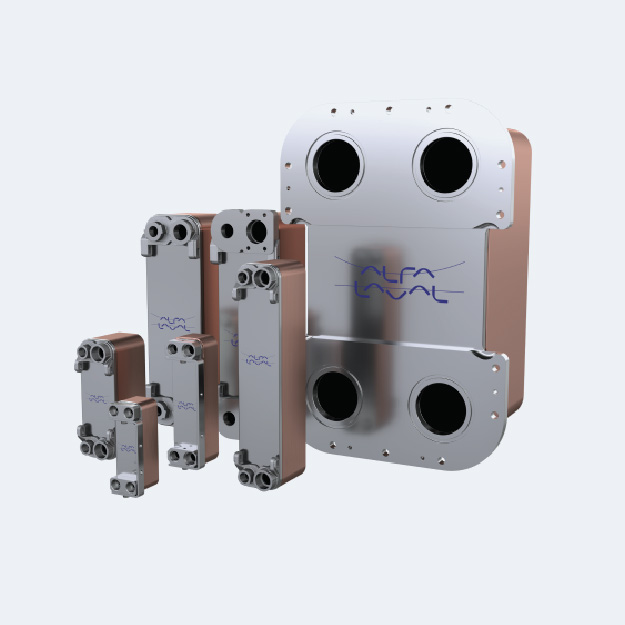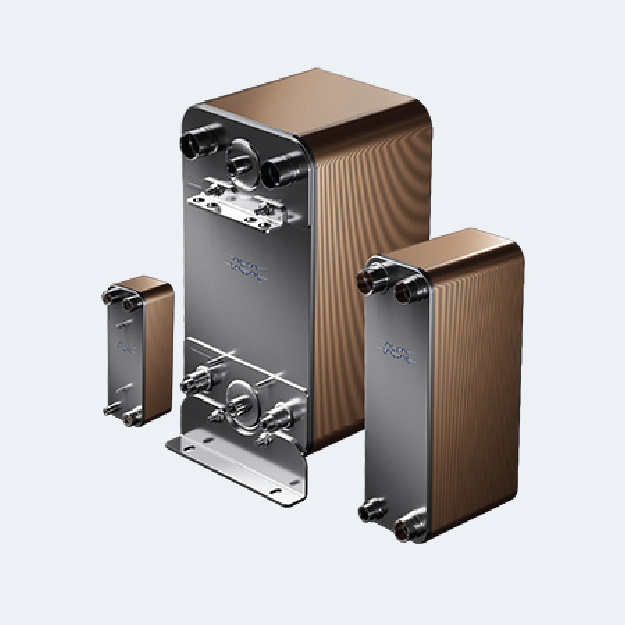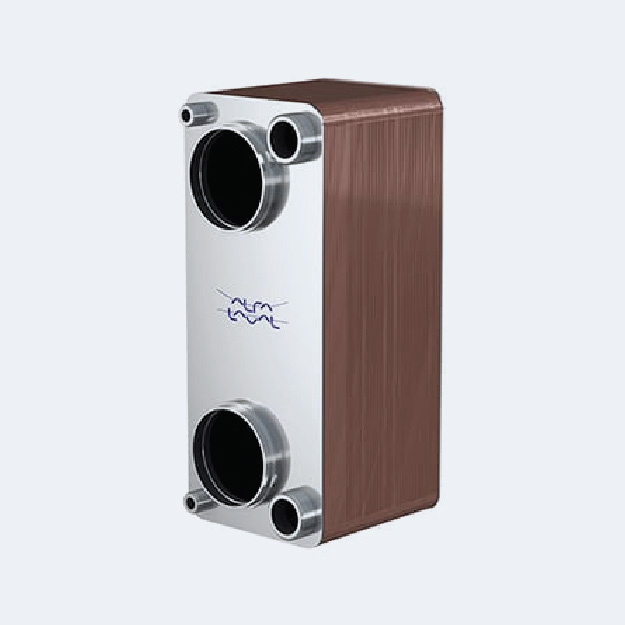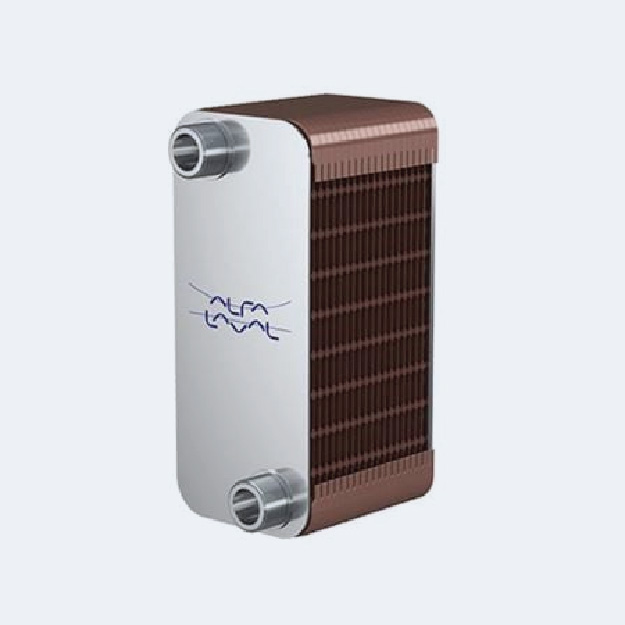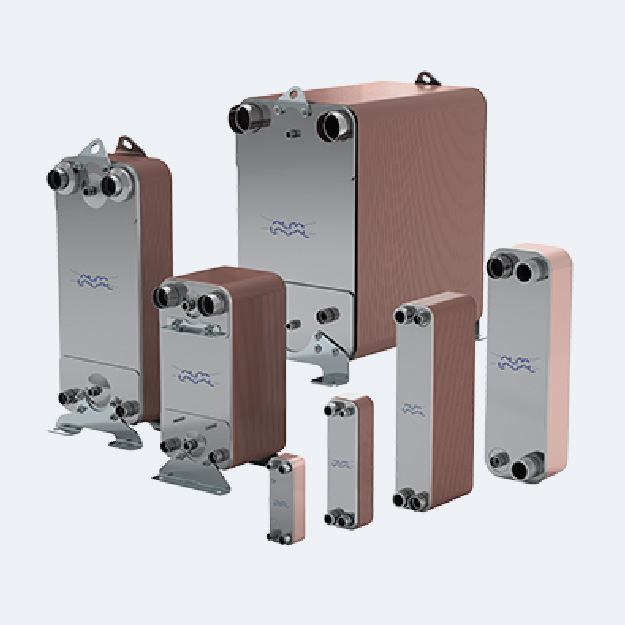
BHE introduction
Contents/ Mục Lục
- 1. Construction of a brazed plate heat exchanger
- 2. How a brazed plate heat exchanger works
- 3. When to choose a brazed plate heat exchanger
- 4. Why choose a brazed plate heat exchanger from Alfa Laval?
- 5. Different product lines for different needs
- 6. Brazed plate heat exchangers (BHE) products
- AC
- AXP
- AXPM
- CD
- CBM
- CB
- DOC
- SE
- GL
- GLX
1. Construction of a brazed plate heat exchanger

Stacked plates
In copper brazed plate heat exchangers thin corrugated stainless steel plates stacked on top of each other are used to transfer heat from one medium to another. The two media are kept separated within the plate pack by a brazed copper seal around the edge of the plates.
This results in a heat exchanger that – unlike traditional technologies – consists solely of surfaces that actively contribute to heat transfer, resulting in significant increases in overall efficiency.
Pressure peaks and rapid temperature changes cause substantial physical stresses (fatigue) within the materials. The brazing technology eliminates the need for seals and thick frame plates.
The contact points between the plates are strongly joined by the brazing process, helping withstand the effects of high pressures and temperatures and providing a long lifecycle.
2. How a brazed plate heat exchanger works
Liquid-Liquid flow animation
Condenser flow Animation
Evaporator flow animation
3. When to choose a brazed plate heat exchanger
Brazed plate heat exchangers can be used for most purposes and in most industries.

When you have limited space
Brazed plate heat exchangers are very compact since no frame or gaskets are needed. The design consists solely of surfaces that actively contribute to heat transfer, resulting in significant increases in overall efficiency. That gives it high heat transfer efficiency relative to its small footprint.

When you want to avoid maintenance
The brazed plate heat exchanger is not openable and is gasket free. It is also designed to create high turbulence which results in a self-cleaning effect. That’s why it requires minimal maintenance.

When you need high pressure
The portfolio of brazed plate heat exchangers can handle different levels of maximum design pressures – up to 154 bar/2233 psi.

When you need accurate temperature control and quick response to temperature changes
The efficiency of brazed plate heat exchangers gives you a small product with low hold-up volume. This enables s quick response to temperature changes and accurate temperature control.

When you want simple selection
Choosing and configuring a brazed plate heat exchanger for the duty is simple with easy-to-use selection tools.
In some cases, a brazed plate heat exchanger is not the most suitable choice

When water quality is bad
Since the brazed plate heat exchanger is not openable, it is not suitable when there is a risk of fouling, clogging or scaling. In those cases, a gasketed plate heat exchanger is the more appropriate choice.

When you have corrosive fluids
The brazed plate heat exchanger is made from stainless steel and copper. It cannot withstand corrosive fluids. If you have sea water, corrosive water or something similar, you need a gasketed plate heat exchanger made from another plate material (for example titanium).

When you need extremely high capacity
The size of brazed plate heat exchangers is limited. If you need extremely high capacity (decided by the duty), a gasketed plate heat exchanger may be a better fit.

When requirements do not allow copper
Some countries do not allow copper in their system (for example in conjunction with tap water). If copper is not allowed, a fusion bonded all stainless steel plate heat exchanger is a better match.
4. Why choose a brazed plate heat exchanger from Alfa Laval?
What sets one brazed plate heat exchanger apart from another? Let’s look at the features of Alfa Laval’s range that create extra value.

Optimize your heat exchanger when you have unequal flow
Many duties today have unequal flow between the sides. This makes it more challenging to get optimal performance out of your heat exchanger. Having asymmetrical channels allows the heat exchanger to optimize the flows on both sides. This results in less surface area because you can put the high flow in the wider channel (larger space) and avoid being pressure drop limited due to the high flow. This also creates higher turbulence as the channel fits the flow, making heat transfer and self-cleaning more efficient. And you get a longer product lifetime since there is less fouling. We call this FlexFlow™.

Secure a small footprint even if you have demanding duties with high temperature and pressure applications
Drawing on our deep knowledge of plate design, our units use thinner plates and fewer of them – but still handle high temperatures and pressures. This results in less raw material use, lower energy consumption, reduced refrigerant charge and a longer equipment lifecycle. We call this design PressureSecure.

When you need products for natural refrigerant applications
Our brazed plate heat exchangers enable the use of new-generation and low-GWP refrigerants to help meet sustainability goals and legislative requirements. We call this REFuture.

Optimize refrigerant distribution for higher efficiency
Utilizing a breakthrough production method, we fully tailor the placement, size and number of inlets to fit the specific application. That ensures the optimal refrigerant distribution system for the product. The result is higher efficiency with the flexibility to use low-GWP refrigerants. We call this DynaStatic™.

Secure reliable performance in applications with a risk of freezing
In some applications and duties, ice crystals can form in the heat exchanger. This creates a risk of freezing which can leave you with a broken heat exchanger. When required, Alfa Laval can supply plate heat exchangers designed to allow ice crystals to form under certain operating conditions, but displaced from sensitive areas. This ensures both reliable performance and a long product life. We call it IceSafe.

Much more than a heat exchanger
Do you want to tailor and do a test run of your product before buying a larger batch? You can rely on our prototyping expertise. Do you appreciate fast delivery, easy installation and optimization, and full compliance with regulations? You can rely on our testing expertise and our large-scale manufacturing capabilities. On top of this, you gain access to a wide range of tools and support, including all documentation, approvals and certifications as well as an ever-expanding range of accessories. We call this ValuePlus.
5. Different product lines for different needs
The Alfa Laval CB is sufficient in most cases requiring heating, cooling and condensing. It can handle most fluids: water, brine, oils and refrigerants (natural or synthetic), even CO2 subcritical high pressure applications up to 80 bar.
The Alfa Laval AC is suitable for any type of refrigeration including evaporation duties.
If you need to use natural refrigerants (like CO2 transcritical application) and extremely high pressure, the Alfa Laval AXP is more suitable.
If you are cooling oil, for example hydraulic oil, and you need a robust unit to handle an unstable or shaky system, then we have the Alfa Laval DOC.
Alfa Laval CD is the choice if you need to separate humidity in compressed air.
Learn more about characteristics of each product line by clicking the link below:
Alfa Laval CB is one of our largest product lines.
The CBs are used in several different applications, mainly liquid-liquid but also 2-phase (HVAC heating and cooling, industrial heating and cooling, refrigeration, oil cooling, solar heating).
They withstand temperatures up 225°C/437°F and design pressure up to 32 bar/464 psi. The CB product line also includes CBH, CBK, CBP and CBXP with different design pressure levels up to 85 bar/1232 psi to fit different types of fluids and applications.
This makes the product line ideal for applications where temperatures and pressures can be high. For example, district heating, heat pumps and a wide range of heating, cooling and tap water solutions.
The heat exchangers support a wide variety of natural and synthetic refrigerants (HFC, HFO) such as Propane, R410A; R32, R134a, R1234ze.
All copper brazed plate heat exchanger units comply with the European Pressure Vessel Safety Directive (PED) and hold many other pressure vessel approvals.
Alfa Laval brazed plate heat exchangers can be supplied with various accessories and extras:
Insulation might be needed for cooling or heating when you want to minimize energy loss and for staff safety.
Couplings and counter flanges can make it easy to install the CB. A large number of sizes and types are available to fit various installations.
Feet and support kits can make it easier to install the CB and ensure it is not exposed to high outer forces by hanging on the pipes and Connections.
Units in the CB product line are available in many different sizes and capacities with varying plate patterns and connections for particular duties and performance specifications.
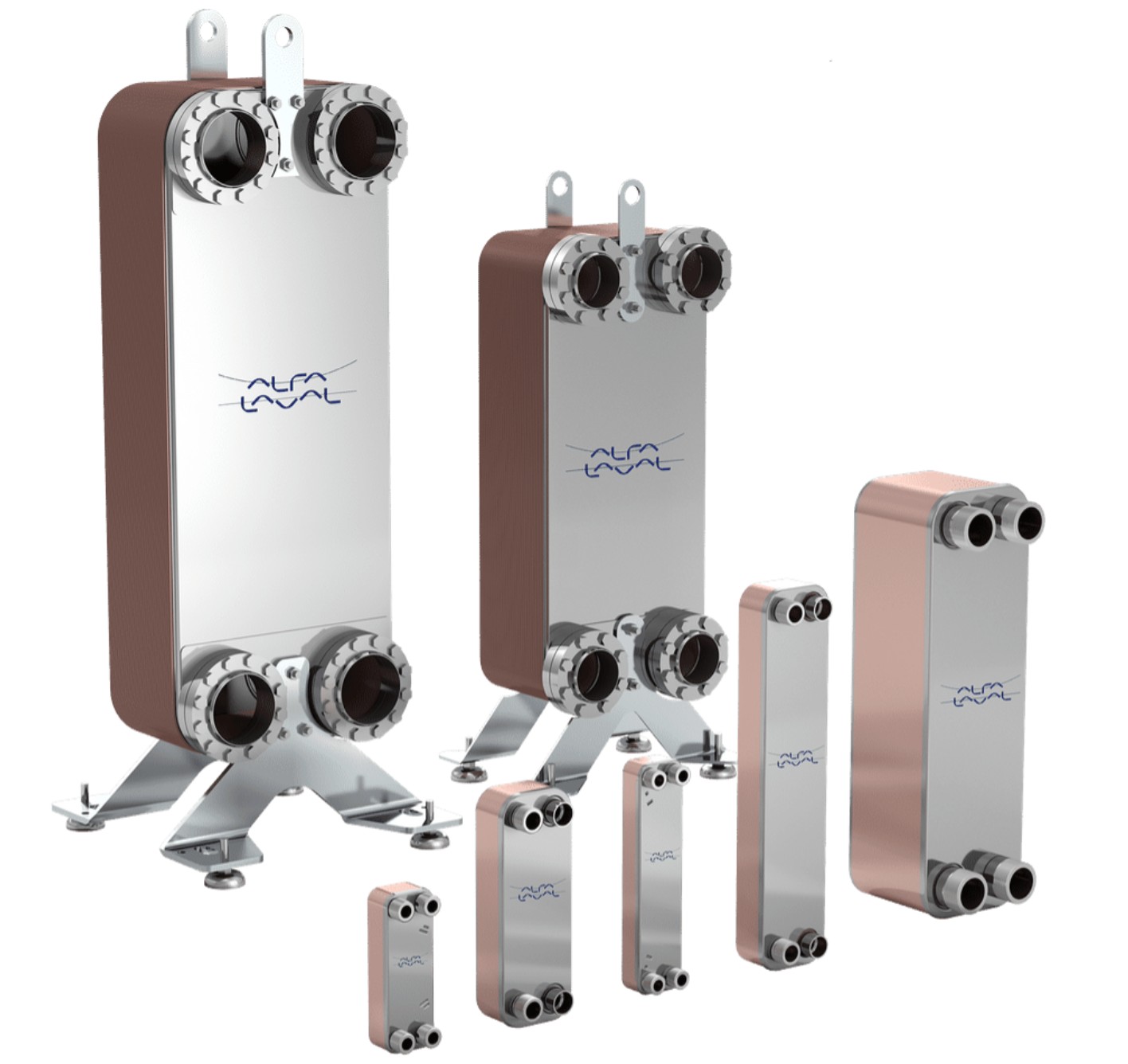
Alfa Chill (AC) has an integrated distribution system and are specifically developed to work as evaporator or reversible condenser in air conditioning and refrigeration chillers and heat pump applications.
ACs are widely used with refrigerants. They are normally used to transfer heat from the refrigerant – the primary fluid – and from water or brine as the secondary fluid. Alfa Laval AC line are mainly used as: Evaporators for dry expansion and cooling water, Condensers for rejecting or recovering heat to water, Economizers for cooling liquid refrigerant and super-heating vapour refrigerant.
The AC line provides optimal evaporators thanks to a flexible distribution system which Alfa Laval adapts to different refrigerants and optimize for different heat flux (applications). The heat exchangers support a wide variety of natural and synthetic refrigerants (HFC, HFO) such as Propane, R410A; R32, R134a, R1234ze.
They withstands temperatures from -196°C to 225°C/-321°F to 437°F and design pressure up to 60 bar/696 psi. All Copper Brazed plate heat exchanger units comply with European Pressure Vessel Safety Directive (PED) and hold many other pressure vessel approvals.
Alfa Laval brazed plate heat exchangers can be supplied with various accessories and extras:
Insulation is needed for cooling to minimized energy loss and to prevent ice build-up.
Couplings and counter flanges can make it easy to install the AC. A large number of sizes and types are available to fit various installations.
Feet and support kits make it easier to install the AC and ensure it is not exposed to high outer forces by hanging on the pipes and connections.
Units in the AC product line are available in many different sizes and capacities with varying plate patterns and connections for particular duties and performance specifications
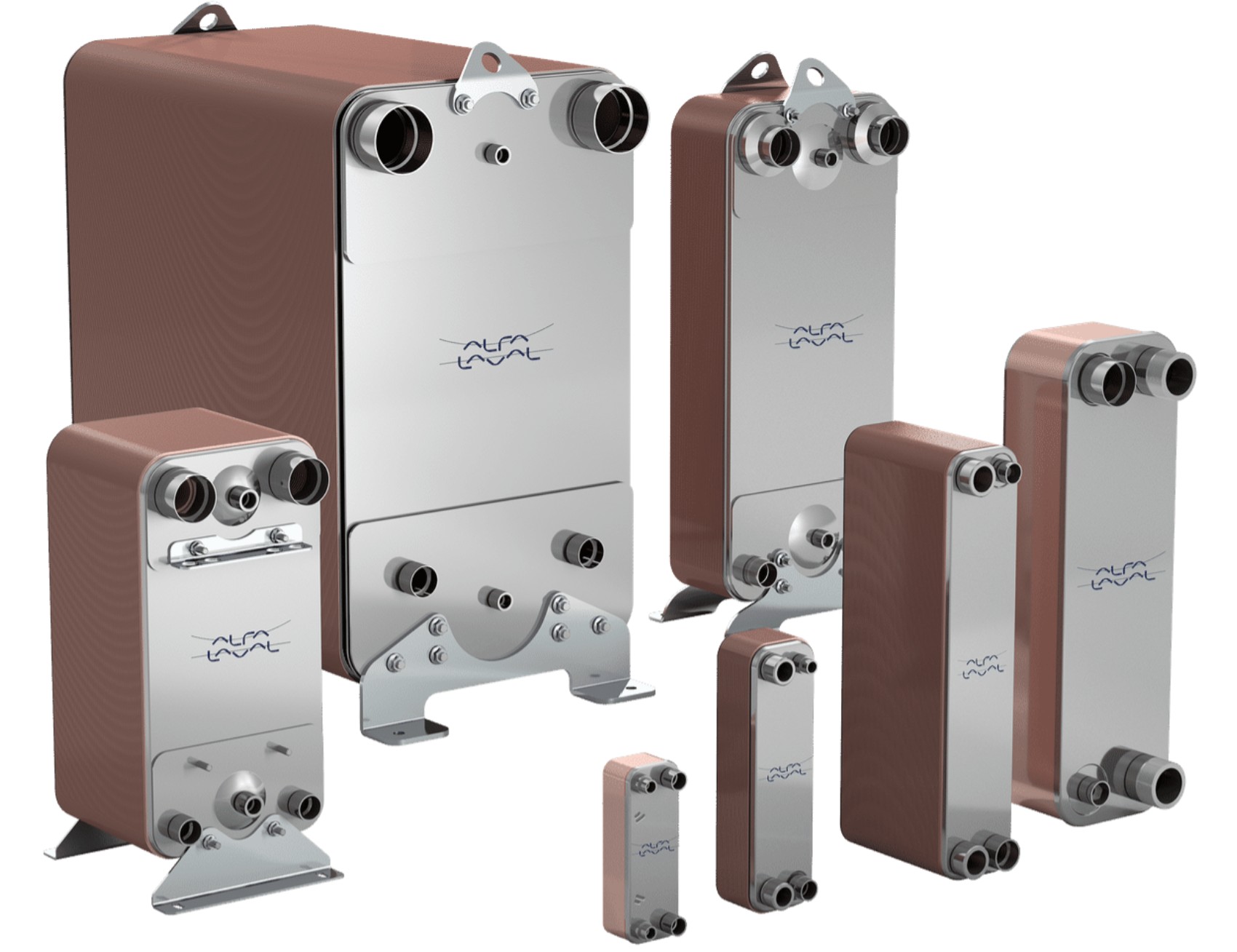
The AXPs are used in several high pressure applications like heat pumps, heat recovery and natural refrigerant (transcritical -high pressure – CO2) applications.
They withstand temperatures up to 225°C/437°F and design pressure up to 154 bar/2233 psi.
The largest AXPs are produced with external frames to withstand extreme conditions.
All copper brazed plate heat exchanger units comply with the European Pressure Vessel Safety Directive (PED) and hold many other pressure vessel approvals.
Units in the AXP product line are available in many different sizes and capacities with varying plate patterns and connections for particular duties and performance specifications.
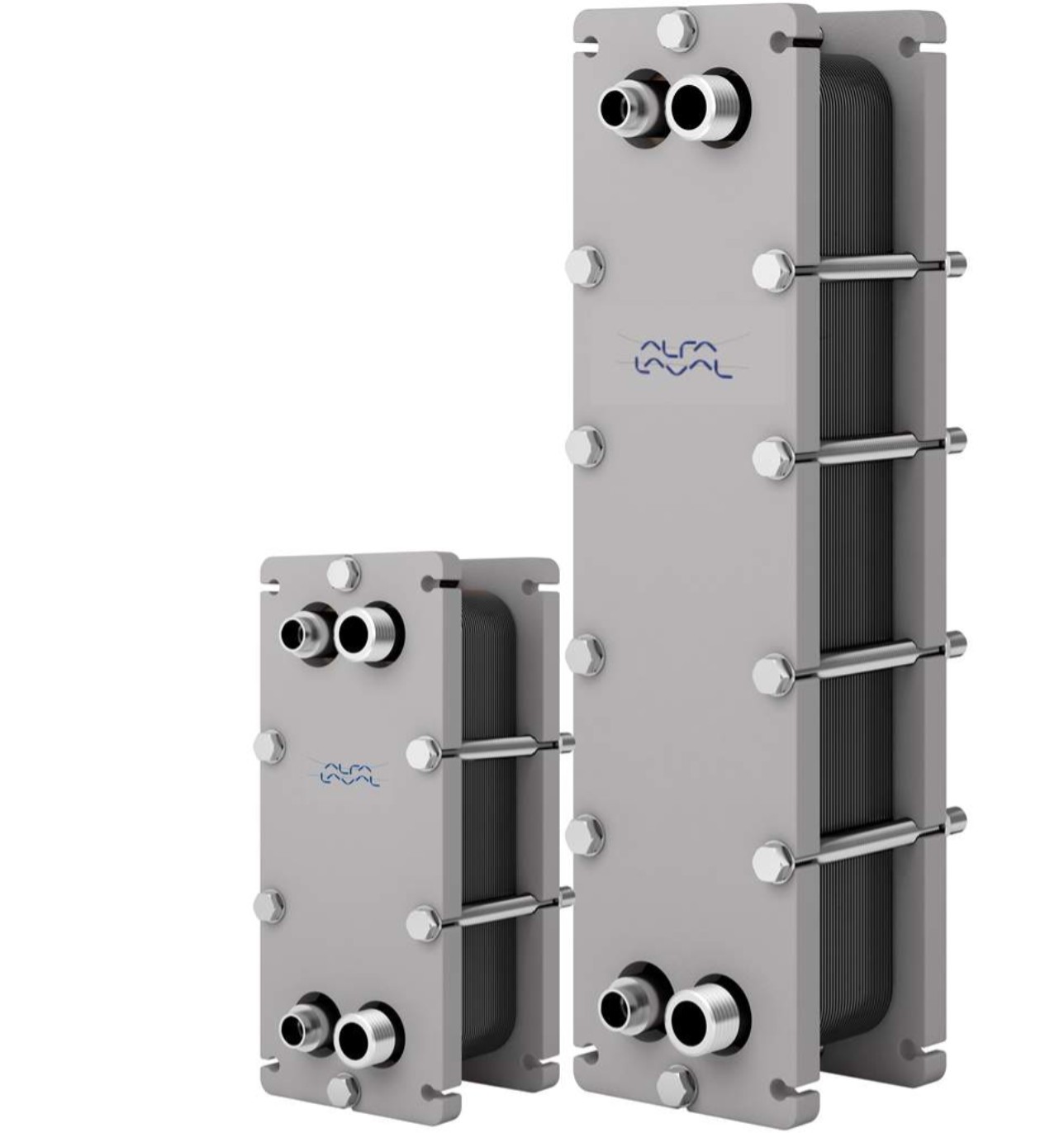
Alfa Laval DOC is developed for oil cooling applications.
The DOCs are used in several oil cooling applications, such as hydraulic oil cooling.
They withstand temperatures up to 225°C/437°F and design pressure up to 40 bar/580 psi.
The DOCs have robust connection plates for tough operating conditions. They are specifically adapted to hydraulic conditions and have a convenient solution for pipe connection and fastening that reduces installation costs.
All copper brazed plate heat exchanger units comply with the European Pressure Vessel Safety Directive (PED) and hold many other pressure vessel approvals.
Units in the DOC product line are available in many different sizes and capacities with varying plate patterns and connections for particular duties and performance specifications
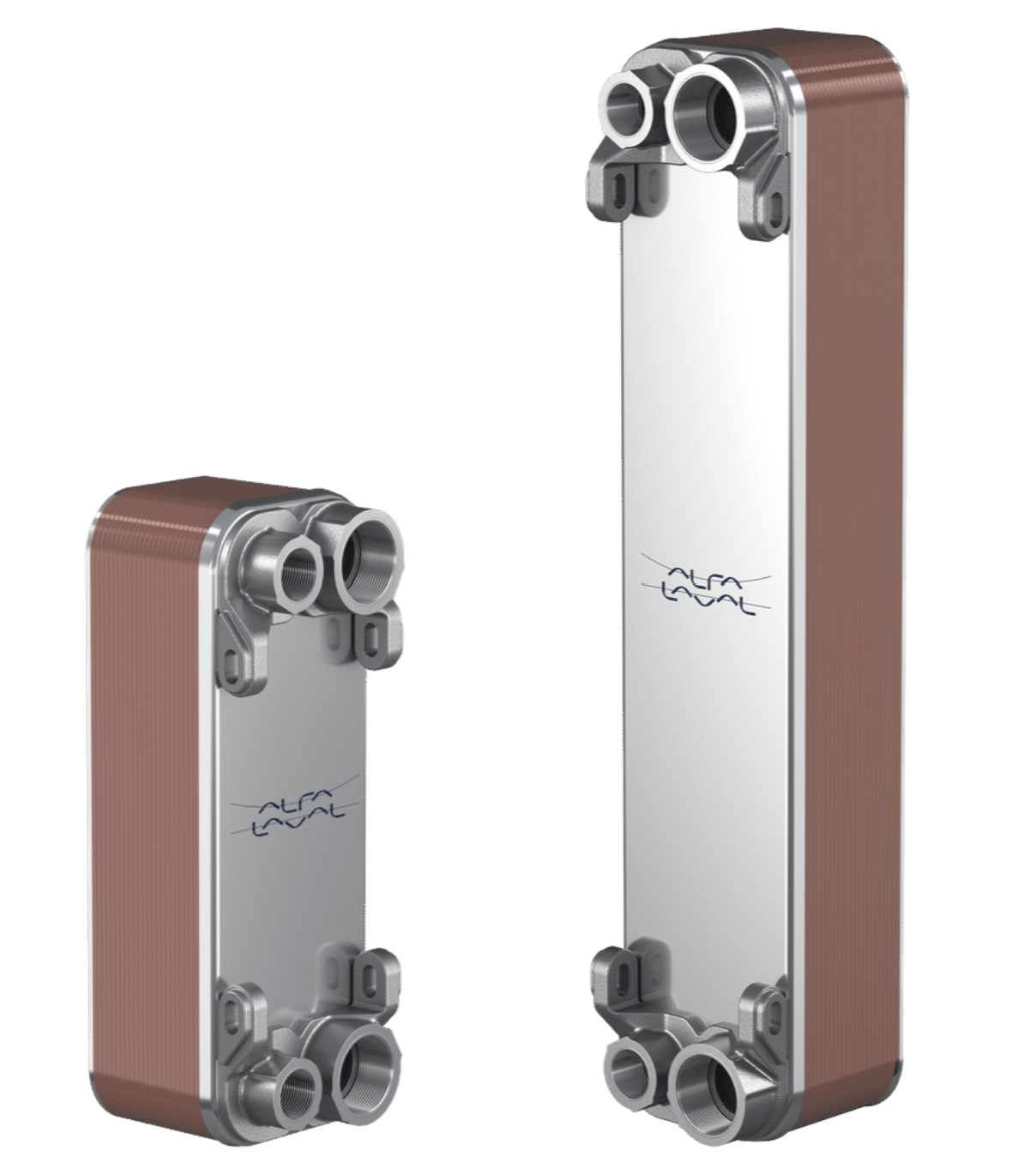
Alfa Laval CD is developed for the refrigerated air dryers market.
The CDs are used in the compressed air industry for separation of humidity in compressed air. They withstand temperatures up to 225°C/437°F and design pressure up to 32 bar/464 psi.
All copper brazed plate heat exchanger units comply with the European Pressure Vessel Safety Directive (PED) and hold many other pressure vessel approvals.
Alfa Laval brazed plate heat exchangers can be supplied with various accessories and extras.
Units in the CD product line are available in many different sizes and capacities, with varying plate patterns and connections for particular duties and performance specifications.
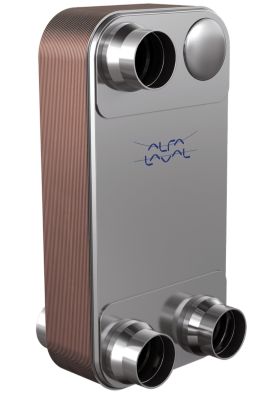
6. Brazed plate heat exchangers (BHE) products
Reference:
- Find out more about the Alfa Laval gasketed plate heat exchangers (GPHE)
- Find out more about the Alfa Laval fusion-bonded plate heat exchangers (FHE)
- AHRI Performance Certification – Why Is It Necessary?
- project@gomec.vn
- Hotline & Zalo 0379 586 886
- (+84) 024 3200 8920
- Gomec Vietnam
- Gomec Vietnam

